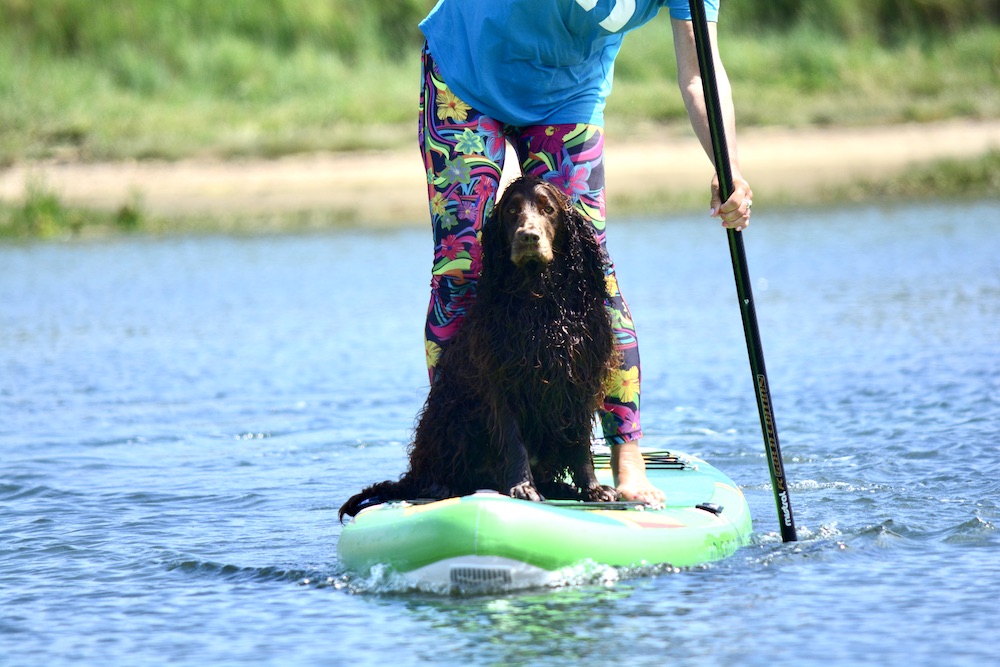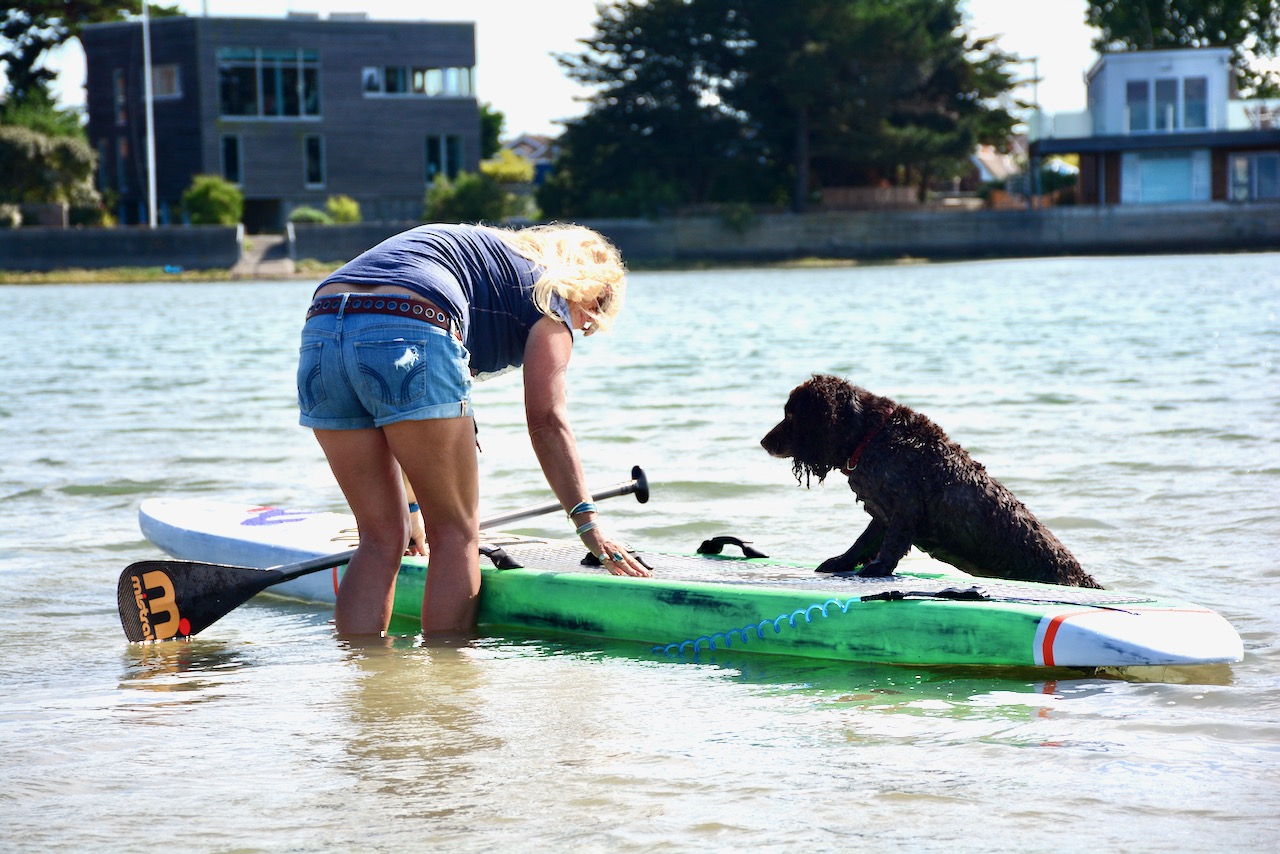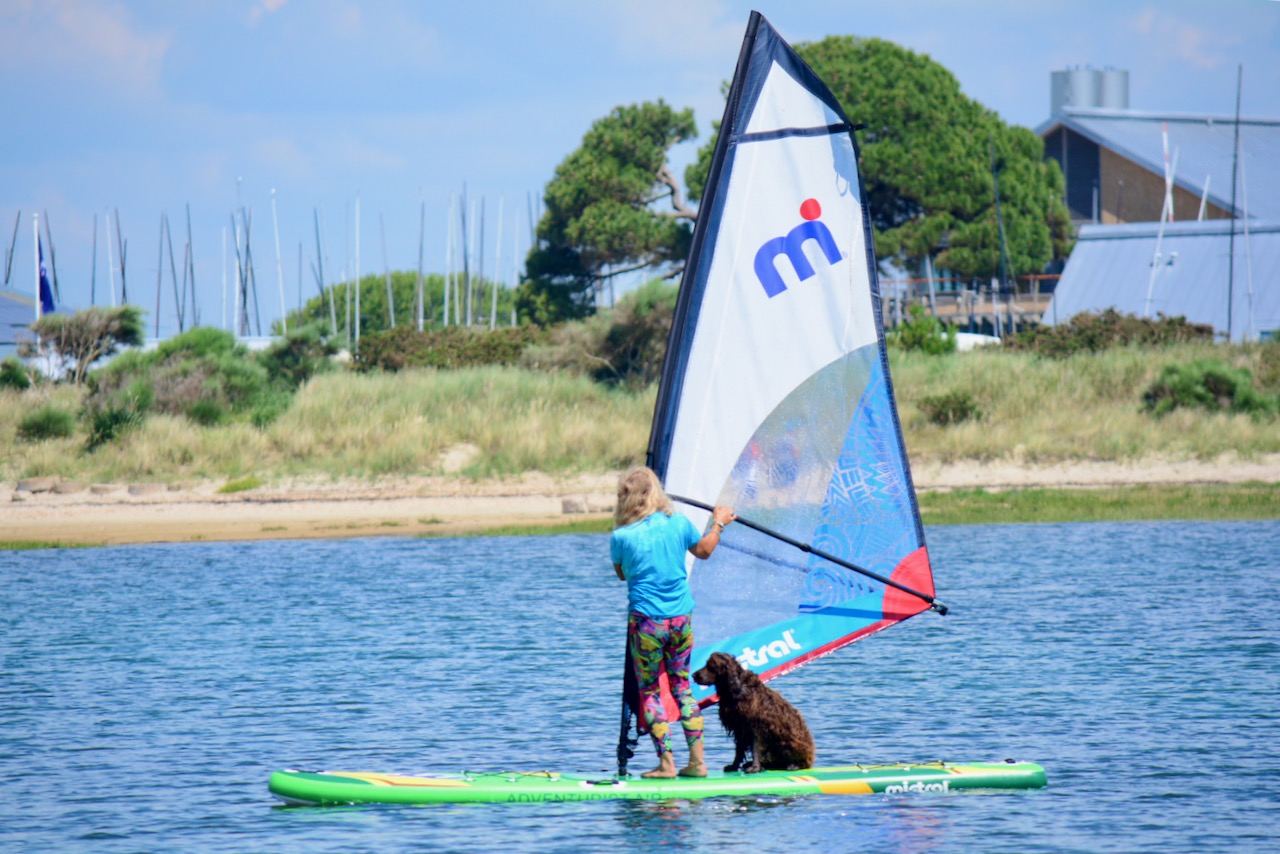Paddleboarding with Your Dog
5 January 2024Paddleboarding with 'Mans' Best Friend
Paddleboarding inclusivity extends to the inclusion of the family dog, which has now become commonplace around the globe. Some dogs SUP surf with their owners. In Japan, it's such a big thing that there are social media platforms dedicated to the art of paddling with your dog and SUP paddleboard dog clubs.
Ensure You Are a Proficient Paddleboarder
Before introducing your dog to paddleboarding, you must have good paddle and balance skills.
Consider Your Breed of Dog
No one likes to leave the family dog behind on a hot summer day, and the idea of including your dog in your sup activity is tempting, particularly for some breeds that are natural water dogs and are perhaps easier to have on board. There's undoubtedly a size limit if you own a very large breed, but up to about 25 kgs, you can enjoy having your dog on board. Be sure your dog 'likes' water and is a proficient swimmer well before you take them on water. The more confident they are with water and swimming, the more likely they will see SUP as an extension of a water-related activity. Ultimately, you are introducing and sharing your lifestyle with your dog, which will make you a happy participant.
Dog Floatation Device and Training
You could consider a dog PFD (floatation device), which often comes with a handle for you to take hold of your dog if it falls over the side. Please don't tether your dog to the board. Most of all, they must learn to remain seated and not run around, otherwise it's tough to maintain balance. The younger you can begin to have them on board with you, the better, as they will learn balance skills as they progress. If you cannot stand and paddle with your dog, consider paddling on your knees, being careful. Train them to follow commands to stay on the board, jump off, or get back on.
Inflatable or Hardboard for SUP Dogs?
Many dog owners taking dogs on paddleboard adventures have noticed standing on inflatables is easier than on laminated boards.
The wider and longer the board, the better - 10'5 as a minimum and 31" width and more.
Please look at our boards, which are suitable for working with the above specifications.

Some Key Tips to Getting Your Dog on Board
LAND-BASED FAMILIARISATION
Step 1: Familiarise your dog by placing your board with the paddle in an open area where your dog will likely see it and get curious. Let them sniff and smell it for as long as possible so they can see it as usual.
Step 2: Get them comfortable with their PFD (If they require one), ensure it fits appropriately, and let them wear it around the house.
LEARNING COMMANDS AND FURTHER FAMILIARISATION
Step 3: Your dog should learn where to step on and off the board. Use commands such as “on” and “off,” and use hand motions the first few times, perhaps offering a treat once onto the board.

Step 5: Once comfortable on the board for extended periods, sit or stand on the board behind them so they get the feeling of sharing the space on the board with you.
Step 6: When standing on the board behind your dog (no paddle), gently rock your dog to encourage it to follow your chosen command.
Step 7: Pick up the paddle and stand on the board behind your dog. Make the paddling motions and reassure them the paddle is safe, moving it over the dog's head.
HEADING TO THE WATER
Step 8: After this initiation, bring your gear and dog to a calm paddling area and run through all of the steps above, still using treats, in a dry area near the water.
Step 9: Once comfortable near the water, bring the board into the shallows and straddle the board with your dog in their proper position seated towards the front
HEADING OFF
Step 10: Sit behind your dog, kneel, and paddle until you feel they are comfortable.
Step 11: When you stand, reassure your dog and get paddling quickly to maintain balance
Step 12: If your dog should fall off, go to your knees and begin the recovery process, pulling the dog back on board
This inclusion in your fun on the water together can be truly rewarding, and the dog will soon let you know if it's loving the experience!
All in all, you will form a new level of bonding by doing something you both can love!
Some dogs will even enjoy joining you if you're a talented windsurfer!
